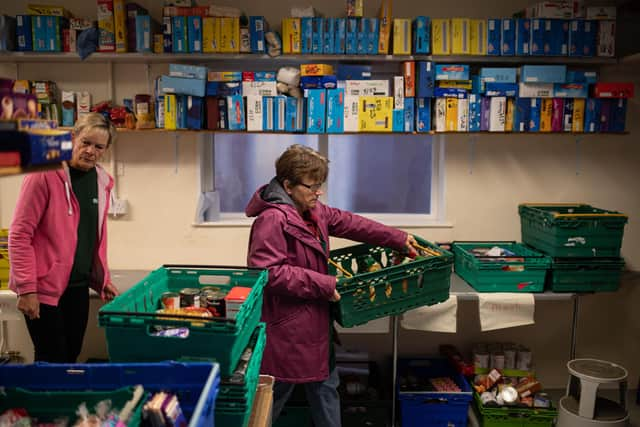How food poverty is being fuelled by our obsession with factory-farmed meat – Philip Lymbery
Inflation has made getting enough food a growing struggle. According to the Trussell Trust, which operates more than 1,300 food banks across the UK, the past year has seen demand for emergency food parcels surge by over a third. Scottish food banks have never seen such demand, with over a quarter of a million parcels delivered over the past year. Of these, 87,000 were destined for children.
In a world of plenty, more people than ever are going hungry. It’s a shocking indictment. A clear sign of priorities going wrong. To those of the ‘Live Aid generation’, like me, a problem long associated with countries like Africa has since become a worldwide crisis. Hunger becoming all-pervasive was brought home to me some years ago during a trip to the US, one of the richest countries in the world. There, a billboard by the charity, Feeding America, warned that “one in five kids faces hunger”.
Advertisement
Hide AdAdvertisement
Hide AdIn Britain, recent research suggests that one in seven people are going hungry because of the spiralling cost of food. Disabled people, single parents and those living alone are the worst affected. The stories are harrowing. Like that of a 50-year-old, single mother-of-two who said she had to seek help because she only had a single tin of beans left in her cupboard. Clearly, ending hunger hasn’t been given anything like enough priority. It’s a deep-seated problem embedded in government and corporate decision-making.
A new way is urgently needed. Helping to shape this new way was a big reason for the United Nations Food Systems Summit in Rome recently, where world leaders gathered to discuss ending hunger. It wasn’t for the first time. In 1996, the world came together and pledged to eradicate hunger. Everyone should have access to safe and nutritious food as a basic right. Back then, 800 million people were hungry. Scroll forward to 2023 and nearly 800 million people still suffer hunger. A situation that remains intolerable.
The Great Grain Drain
A big part of this global problem is that government policies on food and farming revolve around agricultural intensification, which is as much about wasting food as making it. As a result, today nearly half our major cereal crops go into the feed hoppers of confined chickens, pigs, and cattle. In the UK and EU, animal feed accounts for as much as two-thirds of cropland.
Worldwide, the grain-feeding of confined animals is the biggest single source of food loss, squandering enough grain to sustain four billion people. That’s half of humanity alive today. It makes food more expensive too. The more grain for animal feed, the less affordable it is for people, thereby exacerbating hunger and malnutrition.


There is more than enough food in the world to feed everyone. There is more than enough money to transform our food systems in the way that is needed. And there is enough innovation in food and farming to unlock a sustainable future free from hunger. What is urgently needed is the political will to make it happen.
Philip Lymbery is chief executive of Compassion in World Farming, a former United Nations Food Systems Champion and an award-winning author. His latest book is Sixty Harvests Left: How to Reach a Nature-Friendly Future. Philip is on Twitter @philip_ciwf
Comments
Want to join the conversation? Please or to comment on this article.
